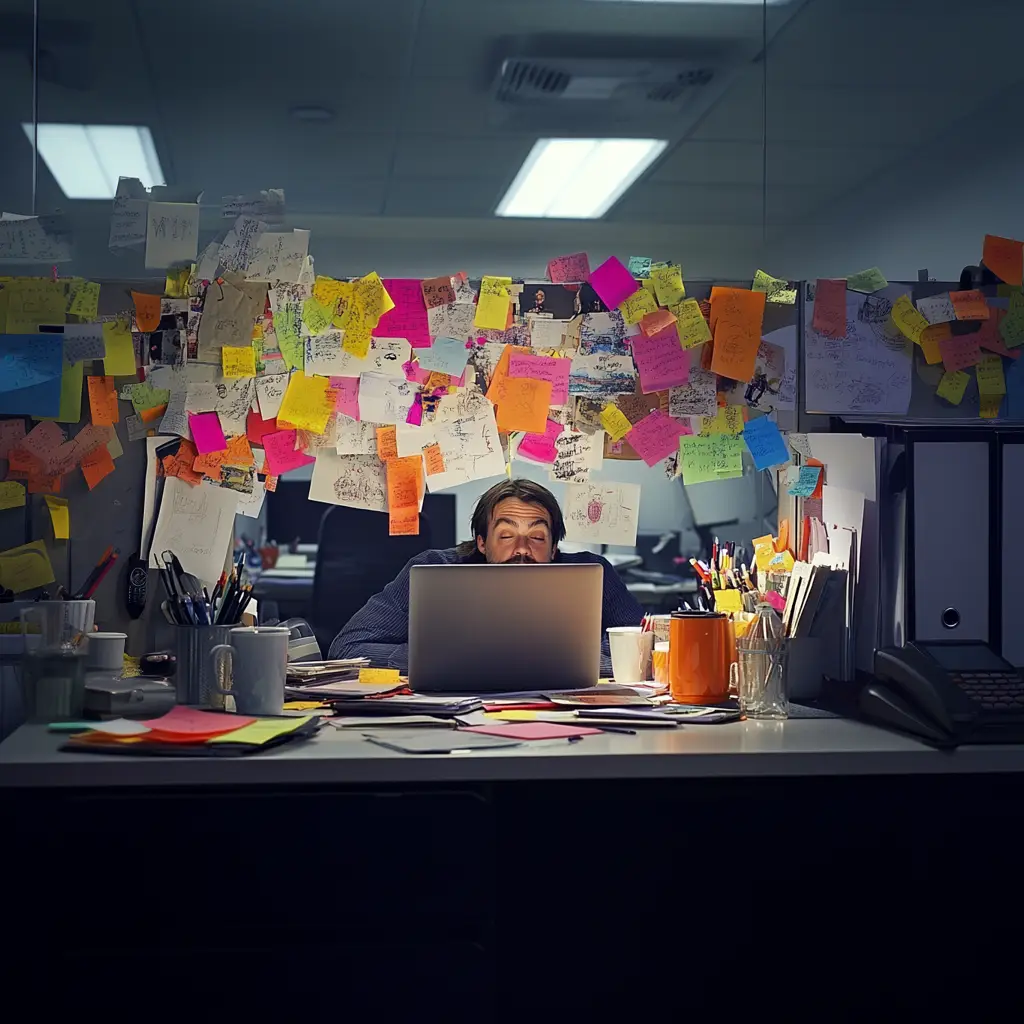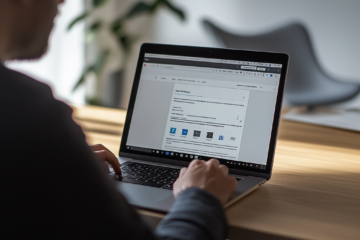The Art of Effective Laziness: How to Take It Easy Without Being Detected
Working in the corporate world can be draining; at times, it seems like everyone wants you to be busy all the time. However, what if you could manage to look like the office hero while sneaking in a little downtime? Welcome to the cunning world of productive laziness, where you appear to be occupied with nothing at all.
These ten cheeky techniques will help you strike a balance between appearing productive and covertly rejuvenating.
The Keys to “Appearing Busy”
Being busy is an art form, and perception is key to any kind of art. Finding the ideal balance between visibility and action—or what appears to be action—is crucial. This is about strategically managing your energy while keeping your professional image intact, not about avoiding your responsibilities.
The following three “looking busy” pillars create an environment conducive to success:
Be Seen (but not too much): Your credibility will soar if you occasionally pass your manager’s desk or have a visible online status in your collaboration tools. In many cases, simply being “around” is sufficient.
Create the Illusion of Engagement: Raise your eyebrows, type frantically, or hold a pen poised over a notepad to create the illusion of engagement. Words are not as powerful as visual cues.
Utilise Tools as Props: Even if you’re watching cat videos in another tab, your digital “workspace” can tell a tale of perseverance. Open Trello, Slack, or even a spreadsheet.
You are prepared to become an expert in the subsequent strategies once you have mastered these foundations.
Learn the Tools
Collaboration platforms like Microsoft Teams, Trello, and Slack are essential in today’s workplace. These platforms are great tools for appearing busy, in addition to being productive. Use colourful Gantt charts, project boards, or conversations to keep a few tabs open. Extra points are awarded if you occasionally send a message like “Following up on this for visibility” or type a few lines into a shared document.
You appear to be the pinnacle of efficiency to the untrained eye. Actually, you’re just showing off your multitasking skills by juggling emails and online shopping.
Make Notes
There aren’t many things that shout “dedicated worker” like frantically writing in a notebook or laser-focussed typing on your keyboard. Taking notes conveys productivity, whether you’re writing down minutes from a real meeting, generating hypothetical ideas, or creating a shopping list.
Place your notebook or device just so that it is slightly angled towards a bystander, and nod occasionally as though you are taking in important information. Bonus tip: even if you’re just drawing little stars and circles, mutter something like, “That’s a great point,” under your breath.
The Role of Networking
Not only can networking help you advance your career, but it’s also a great way to appear busy without actually doing any work. Take some time to browse LinkedIn, leave comments on posts, or send coworkers ambiguous but businesslike messages like “We should catch up soon to align on goals!”
You can always respond, “I’m building strategic relationships for future projects,” when asked. Nobody will question your admirable goal of fostering connections, particularly if you drop phrases like “collaboration opportunities” or “synergy.” Bonus: it may eventually result in something truly beneficial.
Cunning Power Nap
Sometimes not working at all is the best way to “work.” A well-executed power nap can help you look like you’re thinking deeply while also rejuvenating your mind. The trick? Get your posture right. Put your hand on your temple and lean back a little in your chair as though you’re thinking about a difficult problem.
Say something like, “Just visualising the workflow for that project!” if someone interrupts. The secret is to be confident and take ownership of your nap as a time for creative rejuvenation.
Listen to Podcasts or Audiobooks
Put on your headphones, launch your preferred audiobook or podcast, and open a blank document on your computer. You’re completely focused on taking in important information, regardless of the outside world. In fact, you may be delving into a self-help audiobook called “How to Win at Life Without Really Trying” or deciphering the mysteries of a true-crime podcast.
Say something like, “Oh, just brushing up on industry trends to stay ahead,” when someone asks what you’re working on. No one will doubt your commitment to bettering yourself.
The One-Day Assignment
When you can make a simple task last all day, why finish it in thirty minutes? A simple project can be transformed into a “deep dive.” Create a colourful chart that no one requested, investigate tangential questions, or add more layers of superfluous detail.
Provide updates like “I’m refining the metrics to ensure accuracy” or “Still validating some assumptions” when coworkers check in. While you’re secretly mastering the art of dragging things out, you’ll appear to be a perfectionist dedicated to excellence.
Disguised Mindfulness
It is possible to reframe staring into space as “focused contemplation” rather than “daydreaming.” As if resolving a difficult work problem, lean back in your chair, fold your hands thoughtfully, and look off into the distance.
Use a cryptic response, such as “I’m trying to connect the dots on a bigger picture,” when someone asks what you’re doing. They have no idea that you’re mentally organising your next trip or choosing what to eat for dinner.
Mode of Research
Open several tabs in your browser that contain articles, white papers, or industry reports that appear complicated. Extra points are awarded if the titles contain buzzwords like “blockchain,” “disruption,” or “synergy.” Every now and then, nod, scroll, or write down random words in a notebook.
Say, “Just diving into some research for the next phase of the project,” with a slight sigh, if someone happens to pass by. You seem like a wealth of information to the uninformed observer. In actuality, you’re most likely merely browsing through Wikipedia rabbit holes or skimming headlines.
Walk With Intention
Never undervalue the impact that a deliberate walk can have. With a determined expression on your face, pick up a notebook or your phone and walk confidently through the office (or, if you work remotely, your home workspace). Make sure to appear busy as you pass the printer, coffee maker, or even the hallway.
Say something like, “I’m just heading to check on something for the team,” or “Quick thought—I’ll circle back after I handle this!” if someone stops you in the middle of your walk. The way you seem to be able to multitask will impress them.
The Artistic Interest
At your desk, a small creative hobby can serve as the ideal pretext for a “focused activity.” Try your hand at knitting, origami, or doodling. Although these pastimes require little work, they may appear to onlookers to be creative approaches to problem-solving or stress relief.
Say something like, “This helps me clear my head for better strategic thinking,” when someone notices. You get to enjoy a moment of true relaxation while your hobby becomes a badge of your “creative process.”
Keeping the Act in Balance
It takes skill to become proficient at appearing busy without actually working. It’s about striking a balance, not just about laziness. Add just enough genuine work to keep things credible and prevent suspicion. In order to make your productive moments outweigh your downtime, occasionally dive into an actual task and finish it with flair.
Keep in mind that subtlety is crucial. To keep things interesting, switch up your tactics rather than relying too much on one. And just in case someone asks, always have a good explanation ready for what you’re doing. Consider it a performance in which you are the main character in “strategic engagement.”
To Wrap Up
Being able to strike a balance between work and leisure is a useful skill in a society where success is frequently associated with busyness. The tactics discussed here are about preserving your energy and preventing burnout while still projecting a professional image, not about avoiding accountability.
You can easily handle the demands of contemporary work life and rejuvenate your mind by learning the art of “productive slacking.” So go ahead—take that intentional walk, organise that covert nap, or perfect your note-taking doodles. Just keep in mind that it’s about doing nothing well, not about doing nothing at all.





